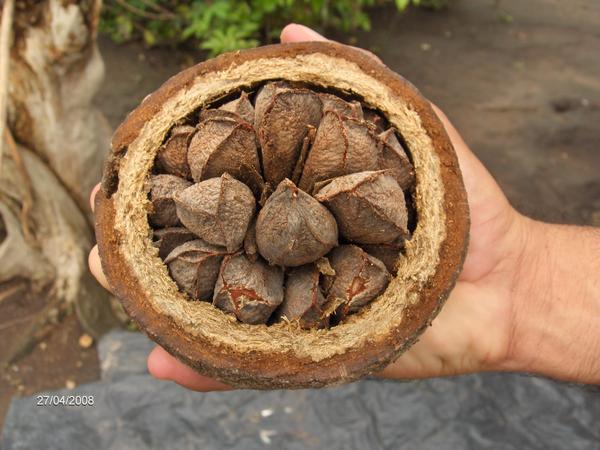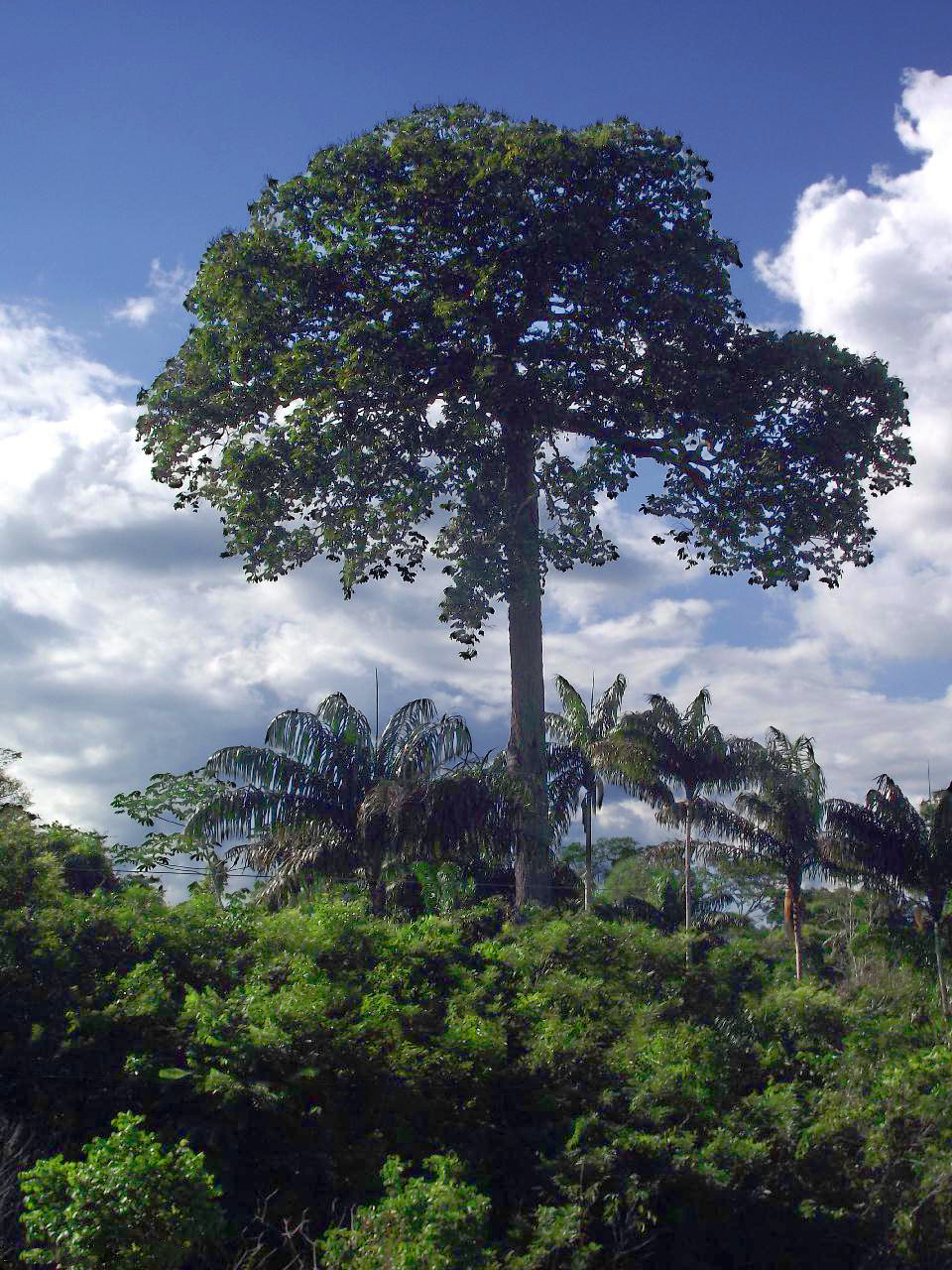Adaptation
 The Amazon Rainforest can be a very harsh environment for any
plant to grow in. Water is one of the main resources
required for life and growth, so the ability to maintain
hydration is a quality that every plant must have in order to
even begin growing. The Amazon can receive as much as 120
inches of rainfall in one year, but with temperatures averaging
from 80° to 90°F during the day, water loss can become a very
hazardous issue to plants on a daily basis. One adaptation
for B. excelsa is the thickness of the nut-bearing pod.
The thickness of this pod wall helps the fruiting body to not
only maintain water for the seeds, but also shield the seeds for
when the pods fall in order to be dispersed (see the
Reproduction page!).
Flowering of the tree typically takes place towards the end of
the dry season and into the wet season. On average, the
fruiting pods take about 15 months to develop after they have
been set, and fall during January or February (part of the rainy
season). Once the seeds have been dispersed, they
generally take 12 to 18 months to germinate.
The Amazon Rainforest can be a very harsh environment for any
plant to grow in. Water is one of the main resources
required for life and growth, so the ability to maintain
hydration is a quality that every plant must have in order to
even begin growing. The Amazon can receive as much as 120
inches of rainfall in one year, but with temperatures averaging
from 80° to 90°F during the day, water loss can become a very
hazardous issue to plants on a daily basis. One adaptation
for B. excelsa is the thickness of the nut-bearing pod.
The thickness of this pod wall helps the fruiting body to not
only maintain water for the seeds, but also shield the seeds for
when the pods fall in order to be dispersed (see the
Reproduction page!).
Flowering of the tree typically takes place towards the end of
the dry season and into the wet season. On average, the
fruiting pods take about 15 months to develop after they have
been set, and fall during January or February (part of the rainy
season). Once the seeds have been dispersed, they
generally take 12 to 18 months to germinate.
The B. excelsa tree itself also has some necessary
adaptations for life in the Amazon. With such
 dense forestation throughout the
entire Amazon region, plants must be competitive in order to get
regular exposure to sunlight. With the trees growing to be as
tall as 200 feet, and with a crown of 100 feet in diameter, B.
excelsa is one of the best competitors in the entire forest when it
comes to sunlight. This height allows the photosynthetic
leaves of the plant to grow above most other trees, giving them the
most direct exposure to sunlight. The large crown of the tree
is also a modification to allow maximum surface area for
photosynthesis. The branching in the crown of the tree is also
much more spread out with more horizontal growth in a thin layer of
branches, rather than more densely packed branching throughout the
entire trunk of the tree (found in organisms such as
Populus
deltoides, the cottonwood tree).
dense forestation throughout the
entire Amazon region, plants must be competitive in order to get
regular exposure to sunlight. With the trees growing to be as
tall as 200 feet, and with a crown of 100 feet in diameter, B.
excelsa is one of the best competitors in the entire forest when it
comes to sunlight. This height allows the photosynthetic
leaves of the plant to grow above most other trees, giving them the
most direct exposure to sunlight. The large crown of the tree
is also a modification to allow maximum surface area for
photosynthesis. The branching in the crown of the tree is also
much more spread out with more horizontal growth in a thin layer of
branches, rather than more densely packed branching throughout the
entire trunk of the tree (found in organisms such as
Populus
deltoides, the cottonwood tree).
To learn more, continue to the Nutrition page!